
- Date: Sep 12, 2022
- Category:
In the absence of modern technology, doctors could only perform open surgeries involving major incisions on the patient’s body, usually resulting in a permanent scar. However, the advent of endoscopic devices meant that doctors could rapidly diagnose multiple issues without needing experimental surgeries.
Endoscopy surgeries are especially vital for detecting a wide range of gastrointestinal issues like ulcers, inflammation, blockage, and precancerous abnormalities. The demand for this procedure contributes significantly to the gastrointestinal endoscopic market, allowing it to generate a revenue of $3.5 billion in 2020 in the United States alone.
The market is further expected to grow at a rate of 14% annually, projected to reach a revenue of $9 billion by 2027. While the growth looks positive, it is natural to wonder: What is causing these rapid strides in the gastrointestinal endoscopic devices market, especially after the global pandemic?
The Impact Of COVID-19 On The Market
The pandemic has significantly stressed the medical infrastructure, which has also impacted the gastrointestinal devices market growth. The global market for these devices was valued at $30.1 billion in 2020. The pandemic disrupted the figures, with the revised figures showcasing a CAGR of 4.6%. The market is expected to reach a value of $41.2 billion by 2027.
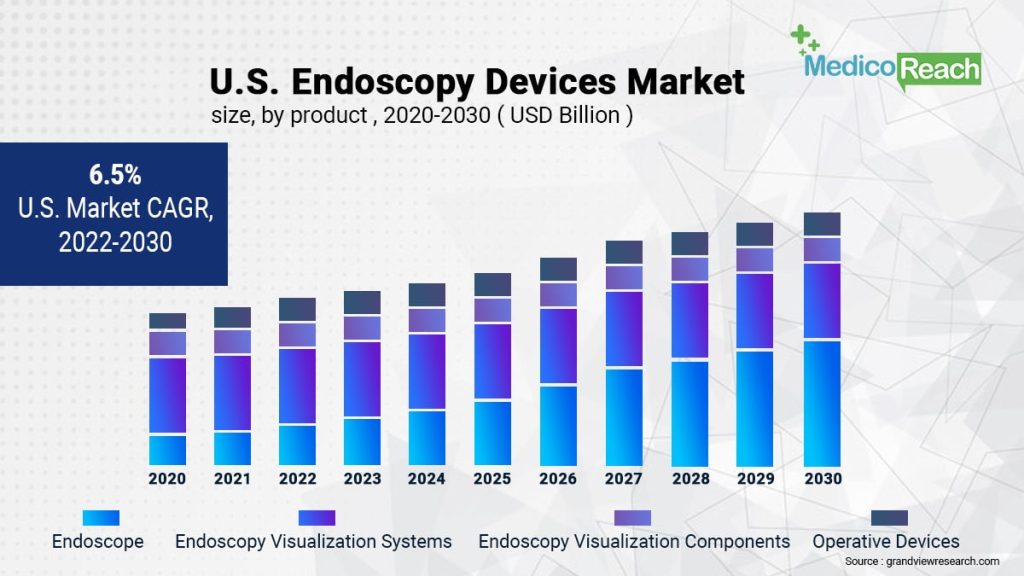
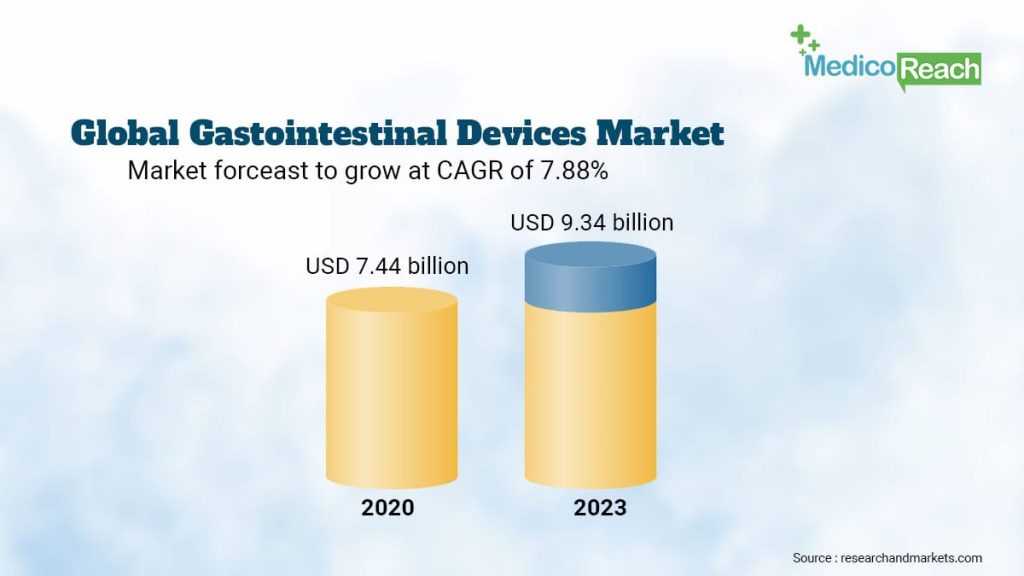
The main driving factor behind the slump in the market was the cancellation and postponement of procedures. Although the devices were still relevant, there were fewer operations, and older gastrointestinal endoscopic devices lasted longer. An estimated 50% decrease in the devices occurred during the onset of the pandemic. Another possible reason includes the apprehension among people regarding the COVID-19 infection. This fear motivated many to cancel surgical procedures, especially if they were not urgent.
Has the Gastrointestinal Endoscopic Devices Market Recovered?
Despite the temporary slump during the pandemic, the market promises to attain significant growth from 2022 to 2030. It is believed to reach a value of $81 million by 2030, growing at a CAGR of 7.4% in the same period. The market is rising due to the adoption of endoscopic devices for minimally invasive surgical procedures. Since these surgeries target different parts like the esophagus, colon, and stomach, each medical professional might require dedicated devices.
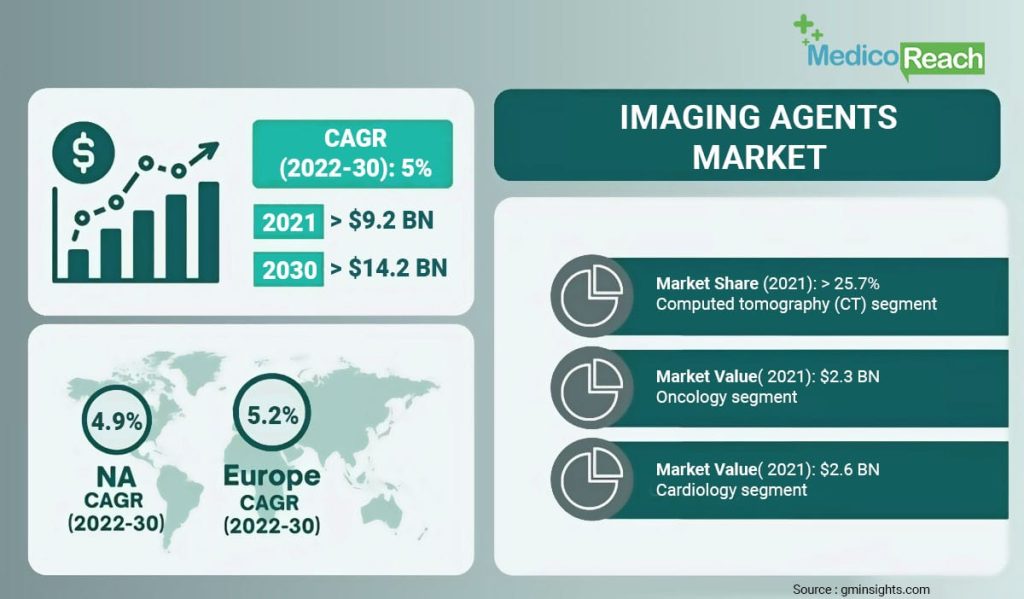
Even among these, gastrointestinal videoscope devices were some of the most influential equipment driving sales, with a 14.8% share. It is estimated that some countries – namely the USA, Europe, China, Japan, and Canada will be primarily responsible for the growth of these devices, contributing to the expected CAGR.
Some of the major organizations in the market are:
- Olympus Corporation
- ConMed Corporation
- Abbott Nutrition
- Stryker Corporation
- Johnson & Johnson
- Boston Scientific Corporation
- Ricoh Imaging, Co. Ltd.
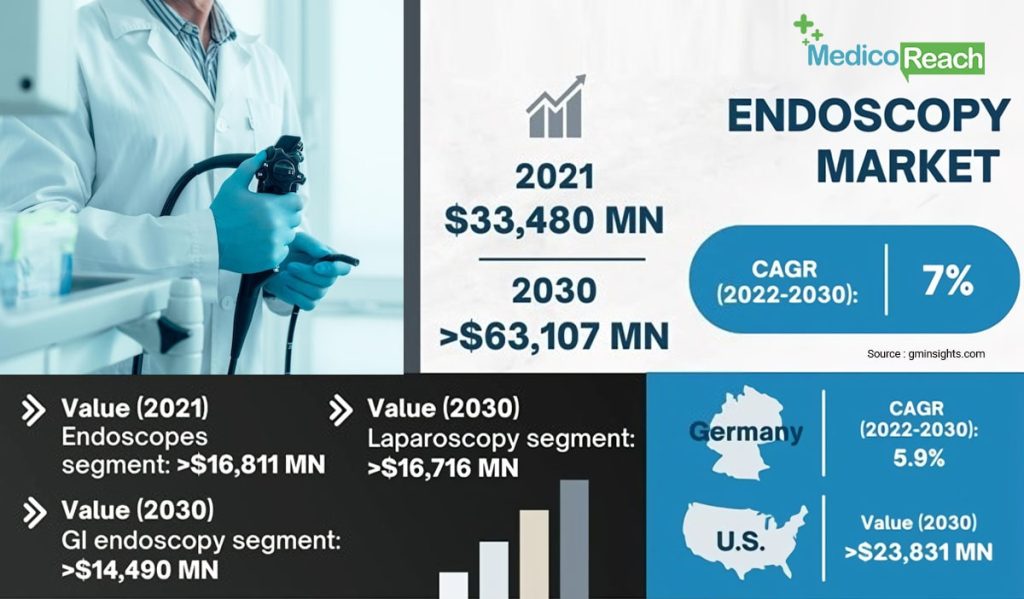
Key Factors Affecting the Growth
- The rise of minimally invasive surgeries spearheads the growth in the endoscopic devices market.
- Using endoscopy over traditional methods like X-rays.
- The focus of the medical industry on reducing permanent scars has also resulted in the increasing use of endoscopic devices.
- Endoscopic devices are also evolving with technological advancements, resulting in the adoption of high-definition visualization systems
The Future of the Gastrointestinal Endoscopic Devices Market
More hospitals are investing in robust endoscopic devices to prepare for endoscopic surgeries. Some of these devices include:
- Procedure-specific scopes
- Imaging devices
- Endoscope cabinets
- Video monitors
- Light sources
- Video processors
- Endoscope cabinets and trolleys
With numerous medical professionals like gynecologists, cardiologists, nephrologists, gastroenterologists, and liver transplant surgeons relying on the procedure, the gastrointestinal endoscopic market is witnessing an influx of demand.
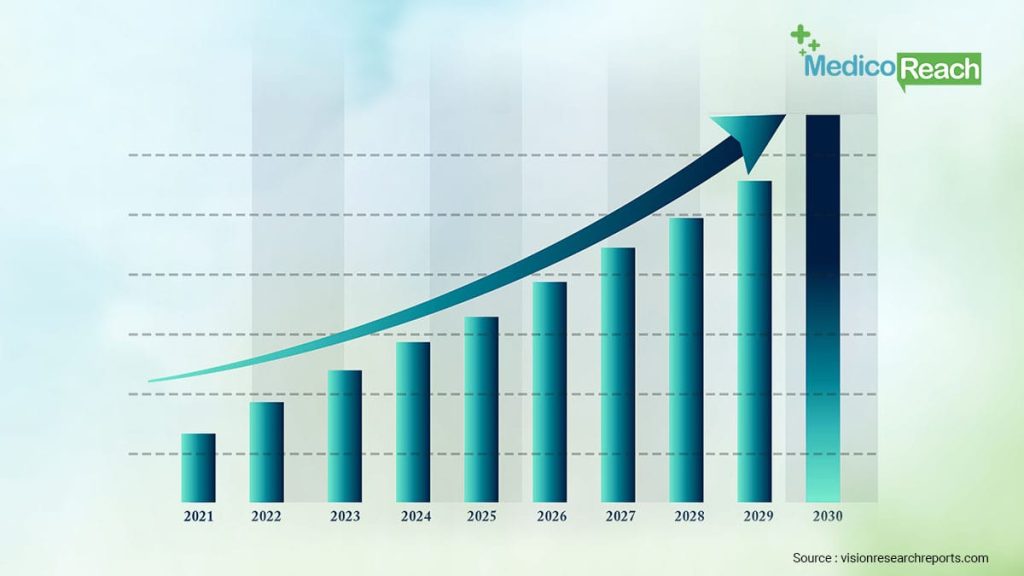
There is also an increase in the occurrence of related diseases that have driven the need to rely on more effective procedures.
The growth can also be credited to hospitals partnering with various suppliers for collaboration, partnerships, and agreements to ensure quality equipment at lower prices. Although there has been a decrease in professionals trained in handling endoscopic devices, countries like the US and UK have adapted by training nurse endoscopists.
With an increase in market share, North America displays the most significant gastrointestinal endoscopic devices market growth, with trends indicating an annual growth rate of 9.3% from 2021 to 2030, expected to reach a value of 72.9 billion by 2027. The valuation in 2022 was $42 billion.
Final Thoughts
The market will display no signs of stopping since the medical infrastructure is constantly accentuated due to technology. This change will only lead to gastrointestinal endoscopies getting easier and saving time for both the doctors and the patient.
Hence, it is fruitful to invest in and market gastrointestinal endoscopic devices as they simplify surgical procedures and help in the rapid detection of gastrointestinal issues. As hospitals adapt to the market, they will witness a constant stream of increasing revenue!



